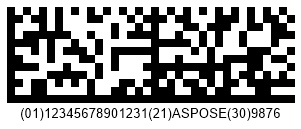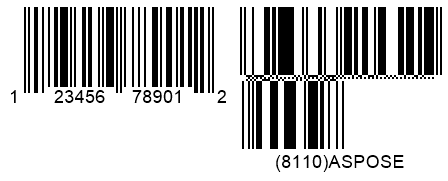Analyzing your prompt, please hold on...
An error occurred while retrieving the results. Please refresh the page and try again.
GS1 is a non-profit international organization that is aimed at developing encoding standards for automatic identification and data capture (AIDC) that refers to the methods of machine data reading used in trading and transportation of goods. To facilitate item tracking, GS1 has introduced multiple identification codes (so called application identifiers) that are used to encode various information about goods. GS1 Application Identifiers (AIs) are defined as prefixes included in barcodes and RFID tags to specify the context and format of the data to be encoded. For barcodes that correspond to one of the most widely used item identification methods, GS1 also has developed its own data encoding standards for different barcode types.
The table below outlines the barcode types that support all GS1 Application Identifiers and those that are compatible only with the GS1AI_01 type.
| Compatibility with GS1 AIs | Barcode Types |
|---|---|
| All GS1 Application Identifiers Are Supported | DataBar Expanded, DataBar Expanded Stacked, GS1 Codablock-F, GS1 Code 128, GS1 DataMatrix, GS1 QR Code, UPC-A GS1 DataBar Coupon, UPC-A GS1 Code 128 Coupon |
| Only GS1AI_01 Is Supported | DataBar OmniDirectional, DataBar Stacked OmniDirectional, DatabarLimited, DataBar Truncated, DataBar Stacked, EAN14, ITF14 |
Aspose.BarCode for C++ enables barcode generation in formats that are compatible with GS1 standards. To do this for the barcode types that support GS encoding, it is required to initialize the CodeText parameter of class BarcodeGenerator as a string formulated using the predefined format:
"(Application_Identifier_1)Application_Data(Application_Identifier_2)Application_Data"
For example, CodeText] can take the following value: “(01)12345678901231(21)ASPOSE(30)9876”.
GS1 Code 128

GS1 Data Matrix

For the UPC-A symbology, Aspose.BarCode for C++ allows generating a barcode label with an additional coupon barcode (DataBar Expanded or GS1 Code128) placed in the same image. This operation can be also performed by generating two barcodes separately and then combining them in an image using an appropriate graphic library; however, the feature provided by Aspose.BarCode for C++ facilitates generating such barcodes in a much simpler and faster way.
As mentioned above, in Aspose.BarCode for C++, it is possible to generate two types of coupon barcodes:
In the library, these two barcode types can be specified by initializing instances of the EncodeTypes class using the following fields: UpcaGs1Code128Coupon and UpcaGs1DatabarCoupon. To generate a barcode with coupon, it is necessary to initialize the CodeText parameter of class [BarcodeGenerator]https://reference.aspose.com/barcode/cpp/class/aspose.bar_code.complex_barcode.complex_barcode_generator/) using an input string in the following format:
"UPC-A Input Data(Application Identifier)GS1 Barcode Text"
For example, CodeText can take the following value: “123456789012(8110)ASPOSE”.


In Aspose.BarCode for C++, it is possible to adjust the size of spacing between coupon barcodes placed in the same image. It can be done by setting the SupplementSpace property in class CouponParameters.
Sample barcode images provided below have been generated using the UPC-A GS1 DataBar Coupon standard and applying different spacing settings.
| Supplement Space | Is Set to 30 Pixels | Is Set to 50 Pixels |
|---|---|---|
Analyzing your prompt, please hold on...
An error occurred while retrieving the results. Please refresh the page and try again.